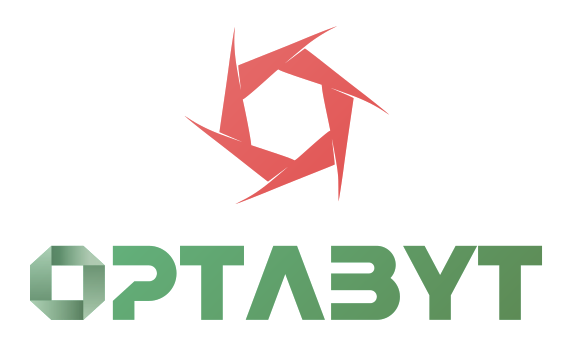
Table of Contents
ToggleAPI Integration Web Development: Powering the Future of Connected Websites
Table of Contents
Introduction
In today’s interconnected digital ecosystem, websites are no longer standalone entities. From payment gateways and CRM systems to social media platforms and mobile apps, businesses need their digital systems to communicate and work together seamlessly. This is where API integrasjon webutvikling (API integration in web development) comes into play.
If you’re building or upgrading a modern website in Norway, integrating APIs is no longer optional—it’s essential. Whether it’s automating payments through Vipps, syncing data with ERP systems, or pulling real-time shipping updates, APIs make your website more powerful, dynamic, and efficient.
In this article, we’ll explore the fundamentals of API integration, the most common use cases in Norway, the technologies behind it, and how to choose the right development partner.
What Is API Integration?
API stands for Application Programming Interface. It allows two separate systems to communicate and exchange data in real-time.
API integration refers to the process of connecting your website or web application to third-party services, internal systems, or external data sources using APIs.
For example:
Displaying live weather data from an external source
Processing payments through Klarna or Stripe
Connecting a contact form to your CRM system
Automating shipping calculations via Bring or PostNord
APIs enable automation, data exchange, and real-time interactivity—all essential for creating modern, responsive, and intelligent websites.
Why Is API Integration Important in Web Development?
1. Automation of Processes
APIs reduce manual work. From lead generation to order fulfillment, data flows automatically between systems.
2. Enhanced User Experience
By integrating maps, social logins, payment gateways, or real-time data, APIs provide users with smooth, fast, and personalized experiences.
3. Scalability
As your business grows, APIs allow you to connect new systems, platforms, and data sources without rebuilding your site from scratch.
4. Cost Efficiency
Instead of building every feature from zero, APIs let you leverage existing services (like Stripe for payments or Mailchimp for emails), saving both time and money.
5. Security and Reliability
Modern APIs follow strict authentication standards (OAuth2, JWT, API Keys), ensuring safe and controlled data sharing between systems.
Common Use Cases for API Integrasjon Webutvikling
1. Payment Gateway Integration
Connect your e-commerce store with secure payment systems:
Vipps (very popular in Norway)
Klarna (installments and checkout)
Stripe (global reach)
Nets Easy
PayPal
2. CRM & ERP Integrations
Sync customer data, sales, and operations:
HubSpot
Salesforce
SuperOffice
Visma
Microsoft Dynamics
3. Shipping & Logistics APIs
Offer real-time shipping rates, order tracking, and fulfillment updates using:
PostNord
Bring
DHL
FedEx
Porterbuddy
4. Social Media & Marketing Tools
Social login (Facebook, Google, Apple)
Share buttons and analytics
Email marketing APIs (Mailchimp, Klaviyo, Sendinblue)
Google Ads and Facebook Pixel integration
5. E-commerce APIs
WooCommerce REST API
Shopify Admin API
Magento GraphQL
Inventory syncing and product feeds
6. Content APIs
Headless CMS (like Strapi, Contentful, Sanity)
Real-time blog feeds
Event calendars synced with Google Calendar
7. Government APIs and Norwegian Services
Altinn (public forms and digital mail)
BankID (secure login and identity verification)
Brønnøysundregistrene (company lookups)
Types of APIs Used in Web Development
REST (Representational State Transfer)
Most common type
Uses HTTP methods like GET, POST, PUT, DELETE
Typically returns data in JSON or XML format
Example: WooCommerce REST API
SOAP (Simple Object Access Protocol)
More complex, often used in enterprise environments
Requires strict message formatting
Example: Some banking or government systems
GraphQL
Modern alternative to REST
Allows clients to request exactly the data they need
Great for mobile-first and front-end-heavy applications
Webhooks
Real-time triggers from external systems
E.g., receive a notification when a new order is placed on your store
API Integration in Different Web Platforms
WordPress
REST API integration for dynamic content loading
WooCommerce API for product management
Custom plugins to connect to CRMs, payment systems, and more
Shopify
Use Admin API or Storefront API
Integrate custom shipping, tax, or analytics systems
Automate inventory syncing and customer segmentation
Custom-Built Websites
Build APIs from scratch or integrate third-party solutions
Use Laravel, Django, or Node.js for backend
Connect to internal tools, BI dashboards, or external databases
Best Practices for Secure and Scalable API Integration
Use HTTPS for all API requests
Authenticate users with OAuth2 or API keys
Rate limiting to avoid server overload
Error handling with fallback mechanisms
Data validation before storing or displaying
Log activity for debugging and auditing
Cache results when possible for performance
Our API Integration Services in Norway
We specialize in building custom websites and integrating them with powerful APIs that help businesses in Norway automate operations, improve UX, and grow online.
What We Offer:
Full-stack API development
Third-party service integration (CRM, ERP, logistics, banking)
Custom API development for internal systems
API testing, security, and documentation
Integration with Norwegian services (Vipps, BankID, Altinn)
Maintenance and scaling support
We serve startups, SMEs, government institutions, and large enterprises across Norway.
Development Process
1. Requirement Analysis
Understand your business goals, workflow, and systems.
2. API Research & Design
Choose the right APIs or design custom endpoints.
3. Development & Integration
Code the integration logic and ensure data flows correctly.
4. Testing & Validation
Test scenarios, error handling, and data security.
5. Documentation & Handover
We provide clear API documentation for future maintenance.
6. Maintenance & Support
Ensure your APIs run smoothly and scale with your business.
Cost of API Integration in Norway
| Integration Type | Estimated Cost (NOK) | Timeline |
|---|---|---|
| Basic API Setup | 10,000 – 25,000 | 1 – 2 weeks |
| CRM or ERP Integration | 25,000 – 60,000 | 2 – 4 weeks |
| Multi-service integration | 60,000 – 120,000 | 4 – 6 weeks |
| Custom API development | 100,000+ | 6+ weeks |
Prices vary based on the complexity and the systems involved.
10 Frequently Asked Questions (FAQs)
1. What is API integrasjon in webutvikling?
It’s the process of connecting your website to external or internal systems using APIs to automate tasks and enhance functionality.
2. Is API integration secure?
Yes—when done correctly using secure protocols, authentication, and encryption.
3. Can I integrate Vipps or Klarna on my site?
Absolutely. These are common integrations in Norwegian e-commerce and are fully supported.
4. How long does API integration take?
Simple APIs take a few days, while complex integrations may take weeks depending on scope.
5. What if the API changes in the future?
We use version control and flexible code structures to adapt to future updates.
6. Can I use multiple APIs in one project?
Yes. Many sites use multiple APIs (CRM, payments, analytics, shipping) simultaneously.
7. Do APIs slow down my site?
No, not if they’re integrated efficiently with proper caching and optimization.
8. What platforms do you support?
We work with WordPress, Shopify, Laravel, Django, and custom platforms.
9. Can I see API logs or reports?
Yes, we can implement logging dashboards for debugging and performance monitoring.
10. Is custom API development possible?
Yes. If no existing API meets your needs, we can develop one tailored to your business.
Conclusion
Modern websites aren’t just pages—they’re powerful platforms that connect your business to the world. With API integrasjon webutvikling, you unlock the full potential of your digital infrastructure by enabling real-time communication, automation, and scalability.
Whether you’re integrating Vipps payments, syncing a CRM, or creating a multi-platform ecosystem, expert API development ensures that your website performs efficiently and securely. Especially in a fast-evolving digital market like Norway, API integration is not just an upgrade—it’s a necessity.
Ready to make your website smarter and more connected? Let’s build a system that speaks the language of modern business—efficient, secure, and future-ready.
Lorem ipsum dolor sit amet, consectetur adipiscing elit. Ut elit tellus, luctus nec ullamcorper mattis, pulvinar dapibus leo.
